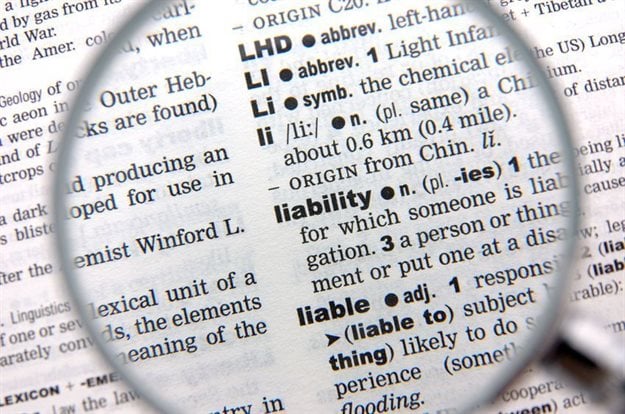






This is according to Kirstie Haslam, partner at DSC Attorneys, who says that product liability refers to a supplier’s liability, or legal responsibility, towards a consumer for damage suffered or loss incurred as a result of a defective or unsafe product supplied.
The Consumer Protection Act (CPA) of 2008 safeguards South African consumers from unsafe or defective goods. “The Act provides clear remedies for those affected by defective or dangerous goods that are produced either locally or imported,” says Haslam.
Under the CPA, suppliers have what is termed strict liability for defective or unsafe products, she explains.
“This means that in a product liability claim, the onus is not on the consumer to prove that a supplier was negligent or directly responsible for a product being unsafe,” Haslam says. “Instead, a claimant’s legal team must demonstrate that a product was faulty and the direct cause of injuries sustained.”
According to the CPA, the entire supply chain – manufacturers, importers, distributors and retailers – is required by law to ensure that a product is free of defects and safe for its intended use.
Haslam continues: “Producers are obliged to provide clear instructions for the safe handling of goods. Also, producers must warn consumers of any risks or hazards associated with using their products that could result in serious harm.”
Under South African law, designers, manufacturers, importers, distributors and retailers can all be held liable for damages caused by defective or hazardous products.
In South African courts, damages awarded are compensatory, not punitive.
If you’re injured due to a defective or dangerous product, Haslam says that you may be able to claim damages for:
The claimant doesn’t have to prove that the defendant was negligent. She says that to establish liability, the claimant’s team has to prove that harm was caused, wholly or partly, as a consequence of:
A product liability case can be heard in a Magistrate’s Court, Regional Court or the High Court. The location depends on the amount of damages claimed.
She says that the court must:
In South Africa, the lower courts have a monetary jurisdiction up to R400,000. The High Court has unlimited jurisdiction.
She explains that a product liability claim may fail if the defendant can prove one or more of the following:
The CPA requires that a claim for damages must be made within three years of the alleged injuries or death.
Product manufacturers spend millions defending liability cases but not all product liability claims go to trial. Haslam says that in some cases, defendants settle before trial.
Product liability claims are complex and unique. “Global supply chains are involved in delivering a high proportion of the products South Africans buy,” she says. “An exhaustive investigation into the origin of a product may be required simply to identify the correct defendant for a product liability claim.”
Product testing may also be necessary to prove that a product failed to meet the required standards defined by the South African Bureau of Standards (SABS) and that this resulted in harm.
Also, Haslam points out that the success of product liability claims often rests on expert testimony from specialists in a particular field of product design and manufacture.
A lengthy pre-trial discovery process is often needed. Haslam says that all these factors make it essential to have expert legal assistance.
The court cases that arose from liability claims against the manufacturers of these products made headlines around the world. She highlights three of the most famous liability cases:
Sheila Liebeck suffered third-degree burns after spilling a cup of McDonald’s coffee in her lap. Liebeck was hospitalised for eight days. She underwent skin grafts and her medical treatment continued for two years.
Liebeck offered to settle the case for just US$20,000, to cover her medical expenses and lost income. McDonald’s returned an offer of just US$800, so the case went to trial. Liebeck’s legal team successfully argued that the fast-food giant was liable because its coffee was served at a scalding 180°F to 190°F. Other companies served coffee at a safer 140°F.
In 1994, a jury awarded Liebeck US$2.86 million in punitive damages and US$160,000 for medical expenses. McDonald’s admitted it had known about the risk of serious burns from its hot coffee for more than 10 years. The risk had been brought to its attention through numerous claims and suits.
The Hot Coffee Case, as it became known, was the most debated product liability case in American history. Ultimately, the trial judge reduced the final payout and the parties settled for a confidential amount.
In 1998, the building company Owen’s Corning agreed to pay out US$1.2 billion in damages. This was in response to more than 176,000 claims of disease and death due to asbestos in the company’s building materials.
Ultimately, the company set aside US$2.6 billion in a fund earmarked for claims.
Asbestos is a naturally occurring silicate used to strengthen and fireproof certain materials. Prolonged inhalation of asbestos is known to cause diseases such as mesothelioma, lung cancer and asbestosis. Asbestos is now banned in many countries, including South Africa.
Toyota agreed to pay out US$1.1 billion to settle a class-action lawsuit following the recall of millions of its cars in 2010 after a series of accidents and deaths allegedly caused by a “sticky” accelerator pedal.
Lawyers pointed out that a safety mechanism wasn’t installed in many of its cars, which increased the chances of an accident if the accelerator malfunctioned.